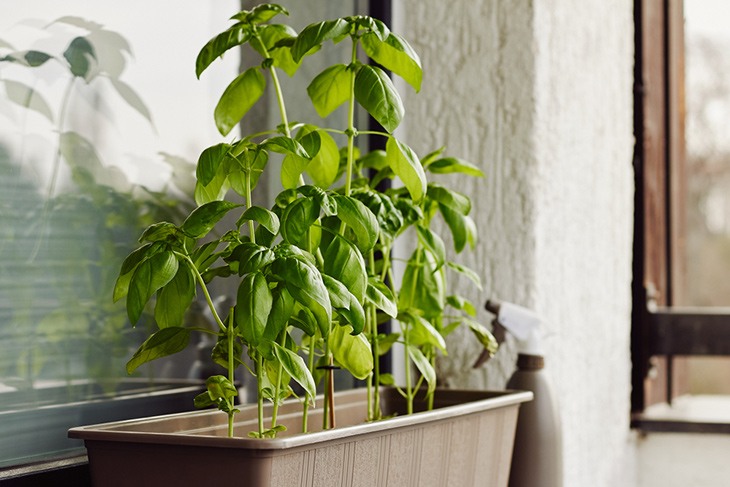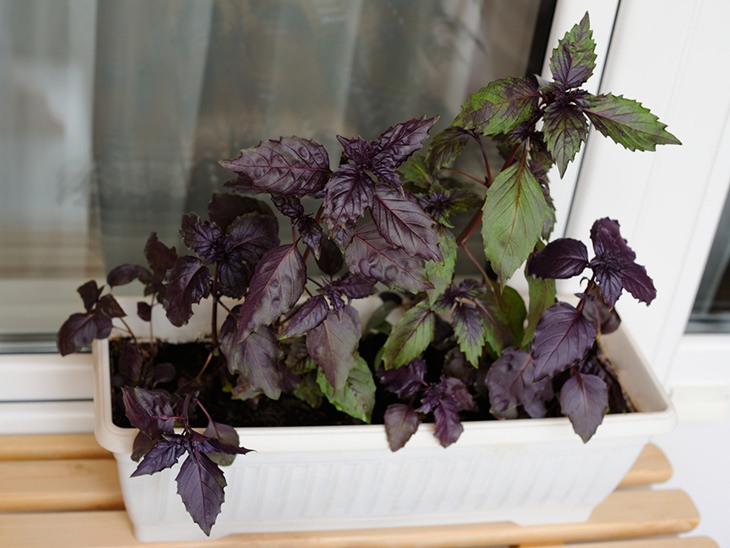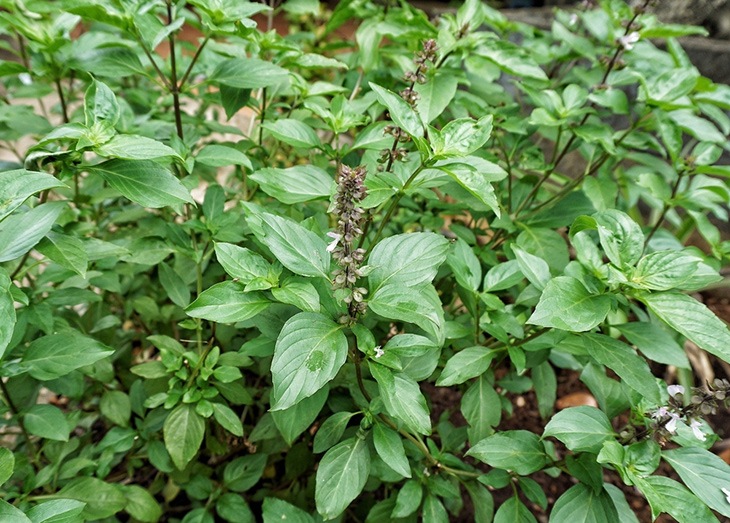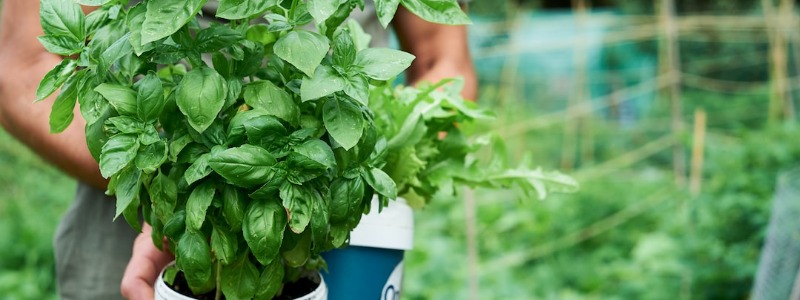Basil: Annual or Perennial? The Definitive Guide.
Contents
- Basil: Annual or Perennial? The Definitive Guide.
- Introduction to Basil plants
- Difference between annuals and perennials
- Basil varieties: annuals vs perennials
- Annual Basil: Characteristics and Growing Tips
- Perennial Basil: Characteristics and Growing Tips
- Overwintering Perennial Basil plants
- How to propagate basil plants
- Best time to plant basil
- Common basil problems and how to fix them
- Final thoughts on growing basil
Basil is a popular herb that is used in many different cuisines and has a distinct and delicious flavor. It is also a versatile plant that can be grown either as an annual or a perennial. However, many gardeners are unsure whether to plant it as an annual or a perennial and which is the best option for their garden.

In this guide, we will explore all the aspects of growing basil, including the benefits of growing it as an annual versus a perennial. We’ll cover the differences between the two, the best growing conditions, and provide some tips on how to care for your basil plant so that you can enjoy its delicious flavor for years to come. Whether you’re a seasoned gardener or a beginner, this guide will provide you with everything you need to know about growing basil.
Introduction to Basil plants
Basil is a fragrant herb that is native to tropical regions of central Africa and Southeast Asia. It is a member of the mint family and is highly valued for its culinary and medicinal properties. Basil plants are easy to grow and come in a range of varieties, from sweet to spicy and everything in between. Whether you are an experienced gardener or just starting out, growing basil can be a rewarding experience.
One of the great things about basil is that it can be grown both indoors and outdoors, making it a versatile plant for any home. Basil is typically an annual plant, meaning that it completes its life cycle in one growing season. However, there are some varieties of basil that can be grown as perennials in warmer climates. This guide will take a closer look at the different types of basil plants, how to grow them, and which variety may be best for your needs.
Difference between annuals and perennials
Understanding the difference between annuals and perennials is essential when it comes to gardening. Annuals are plants that complete their life cycle in one growing season. This means that they germinate, grow, flower, produce seeds, and die, all within one year. Examples of common annuals include marigolds, zinnias, and petunias. These plants are great for adding quick color and variety to your garden beds or containers.

On the other hand, perennials are plants that can live for several years. They die back to the ground during the winter months, but their roots remain alive and the plant will reemerge in the spring. Examples of common perennials include hostas, daylilies, and peonies. These plants are great for creating a permanent structure in your garden and require less maintenance than annuals.
Basil varieties: annuals vs perennials
Basil is a widely loved herb that can be easily grown in gardens, containers, and even indoors. However, there are two distinct types of basil varieties: annual and perennial. The difference between the two is quite significant and can affect how you choose to grow and care for the plant.
Annual varieties of basil, as the name suggests, grow and produce their leaves for only one season. These varieties tend to have a more intense flavor and grow faster than perennial varieties. Common annual basil varieties include Genovese, Thai basil, and Lemon basil. These varieties are typically grown from seeds and should be planted outdoors after the last frost in the spring.
Perennial basil, on the other hand, can grow for multiple seasons if it is cared for properly. These varieties tend to have a milder flavor and grow more slowly than annual varieties. Some common perennial basil varieties include Holy basil, African blue basil, and Greek basil. Perennial basil can be grown from cuttings or seeds and should be planted in a warm, sunny location with well-draining soil.
It’s important to note that while perennial basil can grow for multiple seasons, it may not always survive the winter in colder climates. If you live in a colder climate, it’s recommended to bring your perennial basil indoors during the winter or grow it in a container that can be moved indoors.
Annual Basil: Characteristics and Growing Tips
Annual basil is a popular herb with a lifespan of only one growing season. It is important to note that annual basil is the most commonly grown variety, and is a staple in many herb gardens worldwide.
Annual basil is relatively easy to grow and requires little maintenance, making it an ideal herb for beginners. It is often grown from seed, which can be sown directly into the soil or started indoors and transplanted outside once the weather warms up.

Annual basil thrives in warm, sunny locations with well-draining soil. It is important to water the plant regularly and to ensure that the soil does not become waterlogged, as this can lead to root rot.
One unique characteristic of annual basil is its tendency to flower and go to seed quickly. This can be a disadvantage for those who want to harvest leaves for culinary purposes, as the plant may become woody and bitter once it has gone to seed. To prevent your annual basil from flowering, it is recommended to regularly pinch off the flower buds as they appear. This will encourage the plant to focus on growing more leaves, resulting in a bushier and healthier plant.
Perennial Basil: Characteristics and Growing Tips
Perennial basil is a type of basil that is grown as a perennial plant. Unlike annual basil, which needs to be replanted each year, perennial basil can live for several years if taken care of properly. Perennial basil has a milder flavor than annual basil, but it is still a delicious herb that can be used in a variety of dishes.

One of the main characteristics of perennial basil is its ability to withstand colder temperatures. This makes it an excellent choice for gardeners who live in colder climates. Perennial basil also has a smaller leaf size than annual basil, but it produces more leaves overall. This can make it a more efficient choice for those who use a lot of basil in their cooking.
When growing perennial basil, it’s important to make sure that it gets enough sunlight and water. Perennial basil should be watered regularly, but it’s important not to overwater it as this can lead to root rot. It’s also important to prune the plant regularly to encourage new growth. Pruning will also help to keep the plant from becoming too leggy and will encourage a fuller, bushier plant.
Overwintering Perennial Basil plants
Overwintering perennial basil plants can be a bit tricky, but it’s definitely worth the effort if you want to enjoy fresh basil year-round. The first step is to choose a location that provides adequate protection against frost and cold temperatures. This can be a greenhouse, a heated garage, or even a covered porch.
Before moving your basil plant indoors, you need to prepare it for the transition. First, cut back any dead or damaged foliage and remove any insects or pests that may be present. Then, gently prune the plant to a manageable size, making sure to remove any growth that’s too tall or leggy.
Once you’ve prepared your plant, it’s time to move it indoors. Be sure to acclimate the plant gradually to its new environment by placing it in a shady spot for a few days before moving it to its permanent location. Water the plant sparingly during the winter months, making sure to avoid overwatering as this can lead to root rot.
If you’re growing your perennial basil in a container, you may need to repot the plant every year or two to ensure it has enough space to grow. When repotting, be sure to use high-quality potting soil and provide adequate drainage to prevent waterlogged roots.
With proper care and attention, your perennial basil plant should thrive indoors throughout the winter months and provide you with fresh, fragrant basil year-round. So, give it a try and enjoy the taste of summer even when it’s cold outside!
How to propagate basil plants
Propagating basil plants is a simple and cost-effective way to increase your yield and ensure a steady supply of fresh basil for your culinary creations. There are several methods for propagating basil, and the one you choose will depend on factors such as the time of year, the size of your existing plant, and the resources you have available. Here are three popular methods:
Stem Cuttings
This method involves cutting a 4-6 inch section of stem from the mother plant, removing the lower leaves, and placing the cutting in a container of water. Be sure to change the water every few days and keep the cutting in a warm, sunny location. In a few weeks, the cutting will develop roots and be ready for transplanting.
Division
If you have a mature basil plant with multiple stems, you can divide it by carefully removing it from the soil, separating the stems, and replanting each section in a new container with fresh soil. This method is best done in the spring or fall when the plant is not actively growing.
Seed Propagation
Starting basil from seed is another easy and cost-effective method. Simply sow the seeds in a pot filled with moist potting soil, cover with a thin layer of soil, and keep the soil moist until the seeds germinate. Once the seedlings have two sets of true leaves, they can be transplanted into individual containers or directly into the ground.
Best time to plant basil
When it comes to planting basil, timing is everything. If you’re planting basil outdoors, it’s important to wait until the last frost has passed before planting. Basil thrives in warm weather, so it’s best to wait until the soil has had a chance to warm up before planting.
If you’re planting basil indoors, you can start planting at any time of the year. However, it’s important to make sure that your basil plants get plenty of light. Basil requires at least 6 hours of direct sunlight per day, so make sure that your plants are placed in a sunny spot.
When planting basil, it’s important to use well-draining soil. Basil doesn’t like to be in soil that’s too wet, so make sure that the soil drains well. You can add some sand or gravel to the soil to help improve drainage.
If you’re planting basil from seeds, it’s best to start the seeds indoors about 6-8 weeks before the last frost. This will give the plants enough time to grow and develop before they are transplanted outdoors.
Common basil problems and how to fix them
Basil is a relatively easy herb to grow, but it can be susceptible to some problems that can affect its growth and health. Here are some of the most common basil problems and how to fix them:
Yellowing leaves
If your basil plant’s leaves are turning yellow, this may be a sign of overwatering or poor drainage. Make sure the soil is well-draining and water only when the top inch of soil is dry to the touch.
Wilting
If your basil plant is wilting, this may be a sign of underwatering or heat stress. Water your plant thoroughly and provide some shade during the hottest part of the day.
Pests
Basil plants can be affected by a range of pests, including aphids, whiteflies, and spider mites. These pests can suck the sap from the leaves and cause them to wither and die. Use an insecticidal soap or neem oil to control these pests.
Fungal diseases
Basil plants can be affected by fungal diseases like powdery mildew and downy mildew. These diseases can cause the leaves to yellow and wilt. To prevent fungal diseases, make sure the soil is well-draining and avoid overhead watering. If your plants are affected, remove the affected leaves and treat them with a fungicide.
Final thoughts on growing basil
In conclusion, basil is a versatile and easy-to-grow herb that can add a wonderful aroma and flavor to a wide variety of dishes. Whether you choose to grow annual or perennial basil, it’s important to consider the climate and growing conditions in your area to ensure the best results.
Annual basil is a great choice for those who live in cooler climates or who want to enjoy fresh basil throughout the growing season. It’s easy to grow from seed and produces large, flavorful leaves that can be used in a variety of dishes.
Perennial basil, on the other hand, is a great choice for those who live in warmer climates or who want a more consistent supply of fresh basil throughout the year. While it can be more difficult to grow and maintain, perennial basil offers a unique flavor that is well worth the effort.
No matter which type of basil you choose to grow, remember to provide it with plenty of sunlight, well-draining soil, and regular pruning to encourage healthy growth. With a little bit of care and attention, you can enjoy fresh, delicious basil all year round. Happy growing!
We hope you enjoyed our guide to deciding whether basil is an annual or perennial plant. Basil is a versatile herb that can be used in a variety of dishes, and it’s an excellent addition to any herb garden. Knowing whether to plant it as an annual or perennial can be confusing, but we hope our guide has cleared up any confusion. With the information provided, you can now confidently decide which variety of basil to plant and how to care for it. We can’t wait to see your beautiful basil harvest and the delicious recipes you create with it!

